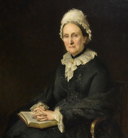
-
Celebrations begin to commemorate 50 years of the University of Dundee
2017 -
The University of Dundee becomes a fully independent institution under the terms of the Royal Charter.
1967 -
Ordinances issued in 1897 made University College form part of St Andrews. and establish a Faculty of Medicine.
1897 -
The Deed formally creating University College Dundee was signed by founders Miss Mary Ann Baxter and her cousin Dr John Boyd Baxter.
1881
The Tay
-
date
Fri, 15 Dec 2017
-
Running Time
00:05:21
The Tay is the longest river in Scotland, stretching 117 miles from Ben Lui in the West, through the Highland lochs of Dochart, Lubhair and Tay, easterly through Strathtay in Scotland’s centre, on to Perth and finally ending at the mouth of the Firth of Tay.
Episode Transcript
The Tay is the longest river in Scotland, stretching 117 miles from Ben Lui in the West, through the Highland lochs of Dochart, Lubhair and Tay, easterly through Strathtay in Scotland's centre, on to Perth and finally ending at the mouth of the Firth of Tay.
The Tay's Gaelic name is Abhainn Tatha and it is often described as the best fishing river in the UK. Ten thousand hectares of the river have been designated a Special Area of Conservation due to the abundant Atlantic Salmon population. Keen fishers also catch Trout, Lamprey and freshwater mussels and people from all over the world visit for the fishing alone.
There are nine bridges which span the river. Of course, possibly the most well known of the bridges over the Tay was the original rail bridge which crossed the Estuary between Dundee and Wormit. When the first rail bridge opened in 1878 it was famous for being the longest bridge in the world measuring just short of 11,000 feet. Dignitaries including Queen Victoria and Ulysses S Grant came to the city to see this feat of engineering. However, during an incredibly violent storm on the evening of the 28th of December 1879, tragedy struck. During what was described as the fiercest storm in years, witnesses reported seeing the train disappear from sight as the train fell into the river, taking with it the high girders and much of the ironwork of their supporting piers. There were no survivors and of the 59 known victims, only 46 bodies were ever recovered. It has been estimated that there were probably 75 people on board but due to a lack of documentation, we will never know for sure.
The other notable, and thankfully incredibly safe, bridge is the 1.4 mile long Tay Road Bridge that links Dundee with Newport-on-Tay. The Tay Bridge opened in 1966 and celebrated its 50th birthday this summer. This bridge meant great changes to the mobility of people from Dundee and Fife who could now easily travel across the river, replacing the ferries which they had relied on up until that point.
The Tay is home to an abundance of wildlife including seals, dolphins and basking sharks. Maybe the Tay's most famous inhabitant was a humpback whale which was seen off the shore of Dundee in December, 1883. As it was Winter, all the whaling boats were in harbour and the decision was made to try and catch the leviathan and it was finally harpooned on New Year's Eve. However, after an epic battle through the night, the whale escaped the harpoon lines and disappeared. Sadly, the whale was found dead a week later and it was towed into Stonehaven where the Regius Professor of Anatomy at Aberdeen University, John Struthers, measured it as 40 feet long. Local showman, John Woods, bought the whale and displayed it in Dundee to paying spectators. Over 12,000 people came to marvel at the beast from the deep on the first day alone. As the whale became too decomposed to be viewed, Dr Struthers arrived to dissect it. John Woods charged spectators a fee and a military band played while the scientists worked. The Tay Whale now hangs from the ceiling of the McManus Gallery where it can be viewed in all its glory.
The Tay is a spectacular feat of nature and quite rightly, it has inspired musicians, artists and writers over the years. As the great McGonagall wrote it: "would make the heart of any one feel light and gay on a fine summer day, to view the beautiful scenery along the banks of the silvery Tay."
Eddie Small

Eddie Small is a lecturer in Creative Writing at the University of Dundee. He was awarded the Student-led 'Most Inspirational Teacher at the University' prize in May 2016. His biography of Mary Lily Walker, Forgotten Visionary of Dundee, was launched in 2013, and he was asked to write a play, Dundee’s Four Marys, which has been performed 7 times. He wrote and performed in 'Pantomime of Death' at the 2016 Edinburgh Fringe. A committed local historian, he regularly give walking tours of his city.
-
Celebrations begin to commemorate 50 years of the University of Dundee
2017 -
The University of Dundee becomes a fully independent institution under the terms of the Royal Charter.
 1967
1967 -
Ordinances issued in 1897 made University College form part of St Andrews. and establish a Faculty of Medicine.
1897 -
The Deed formally creating University College Dundee was signed by founders Miss Mary Ann Baxter and her cousin Dr John Boyd Baxter.
 1881
1881